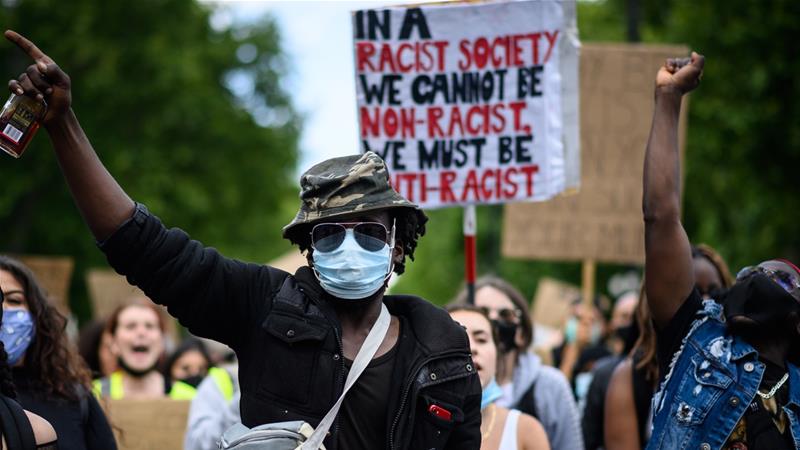
Our observer, Alexei Naumov, talks about the core reasons for polarization in American society.
Why are Americans protesting, blocking the streets and demolishing monuments? The answer to this question seems to be easy: They are protesting against racism. However, people who have been to the United States or who know at least something about it might ask whether there is racism in the United States. Don’t Black people get promoted to top positions? Can’t they go to whatever cafes and restaurants they want and enroll in universities? These are valid questions. In the United States, Black people can do anything, sometimes even more.
When we think about racism, we imagine something like apartheid – separate public bathrooms, segregated public transport and educational facilities. Police batons, dogs and jackboots also come to mind. If we don’t see such outrageous things, well, it means that racism does not exist.
Many Republicans apparently use the same logic. First, the debate around racism is incomprehensible to an average white worker. These people cannot take conversations about decades of white supremacy seriously, because they live in trailers and have no money. Second, many educated Republicans who show tolerance toward ethnic minorities and share the ideas of freedom and equality, cannot understand why they should change anything if they personally have never discriminated against anyone or had slaves.
To understand why different segments of American society do not seem to hear each other (let alone why most Russians deeply misunderstand the problem), it is essential to explore how Democrats perceive racism. They see it as a systemic issue. From their point of view, the system of social interaction in the United States is constructed in a way that perpetuates white privilege and discrimination against Black people.
Democrats use statistics to support their argument. For example, unemployment rates among Black workers have been consistently higher than among their white counterparts. On average, Black employees make only 62% of what white people earn and their annual income is lower than that of white workers ($24,700 and $42,700, respectively). Even though school segregation was officially struck down more than 50 years ago, approximately half of American students still attend schools that have been historically “white” or “Black.” It is important to note that nonwhite schools receive less funding per student and Black students are more likely to get suspended.
Furthermore, Black home buyers get turned down for mortgage loans more often than white applicants, even if they have a higher income. Black people face more barriers in receiving health care. (There are twice as many uninsured people among the Black population compared to the white population.)
Considering the notoriously famous 13/50 proportion – African American people account for only 13% of the population, yet 50% of people arrested on charges of homicide are African American – the criminal justice system is biased against Black people. African Americans are four times as likely to get arrested for marijuana possession, even though consumption rates are the same in both Black and white cases. Upon their conditional release from prison, Black people are more likely to be under police supervision. The list goes on. Black people are more likely to be stopped and searched by police and receive harsher sentences for committing the same crimes as white people. The system often prejudges Black people as recidivists, and they are less likely to be released on parole.
A survey conducted by the Democracy Fund and UCLA shows that almost all Americans realize that Black people face varying degrees of discrimination, ranging from “a little” to “a great deal.” So in general, everyone supports Black Lives Matter protests and the demand for reform. In fact, in the United States, it is not that easy to find a real, hard-boiled racist like those from Soviet political cartoons even in the most remote areas of the country.
So, currently, the debate is not about whether racism exists, but how to dismantle it. Republicans think that a few isolated, targeted measures are going to be enough to eliminate the problem. Democrats do not support this idea. They argue that institutional racism is systemic and cyclical. Even if you fix a few of its elements, the system is going to prevail. Thus, they believe in radical changes that will dismantle racism. Only after that will they be able to rebuild America on top of the ruins.
On July 4, President Donald Trump and Former Vice President Joe Biden made very different statements, reflecting a sharp contrast between two visions of the problem. As Trump talked about the greatness of America, Biden reiterated the importance of change.
Democrats and Republicans are too busy fighting to steer the American ship and cannot hear each other. Yet, so far it looks like Biden is going to be the new captain. He will have to maneuver this ship quickly and keep it from crashing into the reefs of civil conflict.
This will not be an easy task. Members of Trump’s 2016 team remain aggressive, desperate and well-armed (both literally and figuratively speaking).

Leave a Reply
You must be logged in to post a comment.